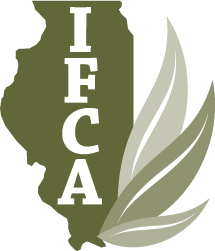EPA Publishes Update on Herbicide Strategy Progress
On Tuesday EPA released an updated Herbicide Strategy that appears to take in consideration the concerns raised by IFCA and other agricultural stakeholders.
The agency has been under pressure from the courts to comply with a feature of the Endangered Species Act that requires EPA to consult with the Fish and Wildlife Service and/or National Marine Fisheries Service to avoid harm to federally listed species or their habitat.
EPA negotiated a delay to complete the herbicide strategy from May 30 until Aug. 30, which was approved by a judge in February. The agency plans to release a draft insecticide strategy by July 30.
EPA says it will be increasing the number of conservation measures farmers can employ and using better maps to identify where the practices are needed. The new maps are expected to considerably reduce the areas where growers might have to employ certain conservation practices.
Although points will still be assigned to particular conservation practices, EPA said it will now use four tiers – none, low, medium, high – to describe the effectiveness of the mitigation that may be needed, it added. “EPA also plans to create educational materials that concisely explain” how users would determine the amount of mitigation needed based on the product label. “EPA plans to include in the educational materials summary information on how EPA calculates this amount based on the toxicity and other properties of an herbicide, and on where and how it is applied.” The agency also plans to make nine more conservation practices eligible for mitigation, including erosion barriers, reservoir tillage and soil carbon amendments.
EPA also is considering reducing the mitigation that may be needed "when growers have already adopted practices to reduce pesticide runoff or where runoff is minimal,” it adds. “For example, in areas of the country with flat lands or minimal precipitation, EPA is considering approaches to reduce the mitigation burden on growers. As a result, those growers may need less or no additional measures to use agricultural herbicides, compared to those in the draft strategy.”
EPA plans to apply the strategy when issuing new active ingredient registrations or registration review decisions under the Federal Insecticide, Fungicide and Rodenticide Act.
IFCA will keep our members informed if EPA releases any additional information on the strategy in the coming months.
